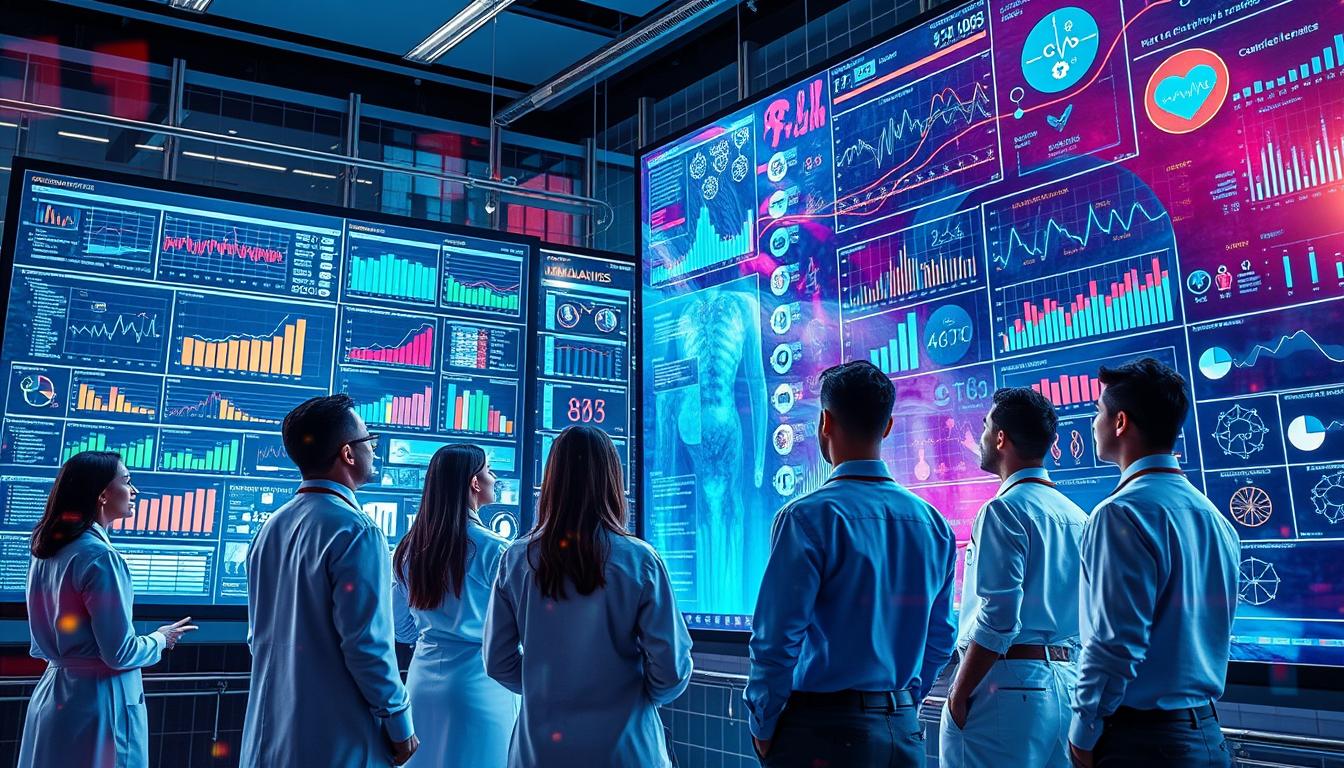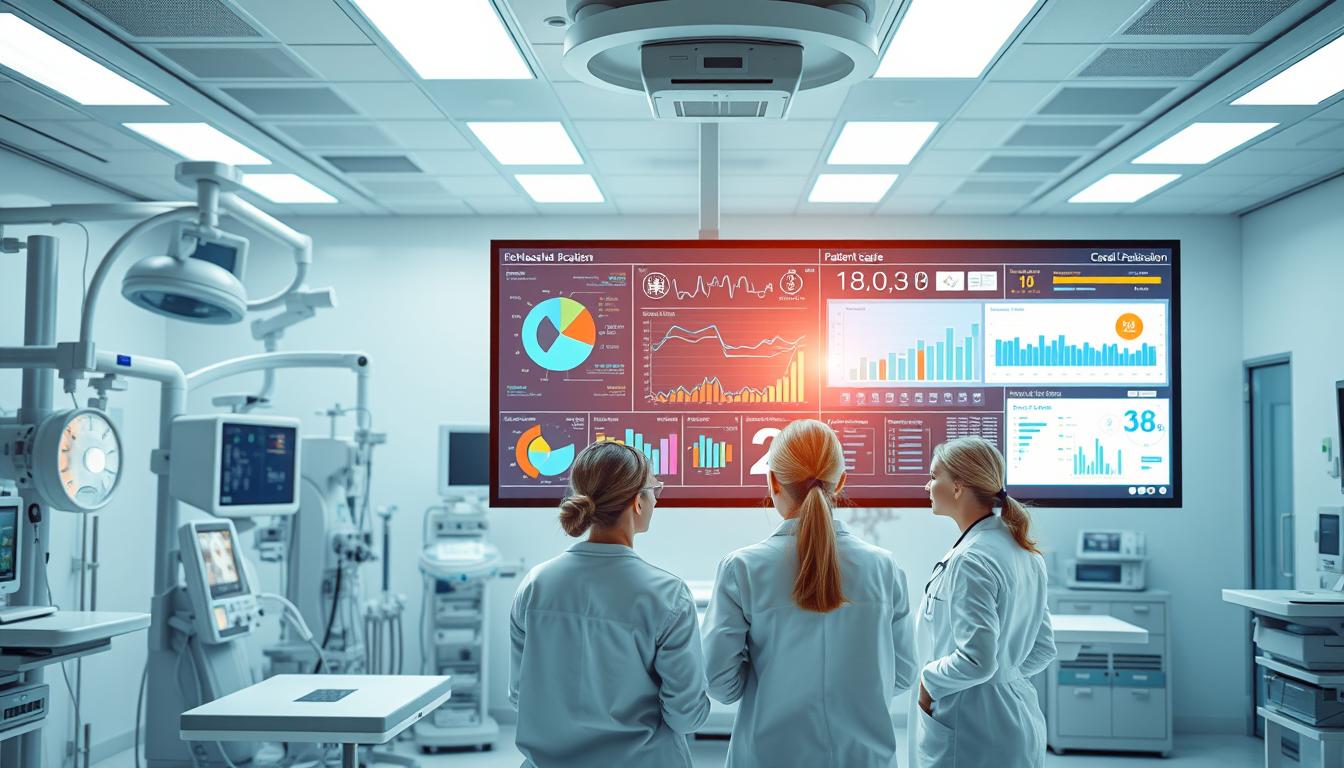Medical software is key to better healthcare operations. It helps with patient care, cuts costs, and boosts efficiency. It’s a vital part of healthcare tech, making services smoother and care quality higher.
Healthcare tech has changed how care is given, with medical software leading the way. It helps lower costs, gets patients more involved, and leads to better health results.
We aim to shed light on medical software’s benefits in today’s healthcare. We’ll look at healthcare tech’s current state and how medical software improves operations. Knowing these benefits helps healthcare providers choose the right tech for their work.
Key Takeaways
- Medical software is essential for optimizing healthcare operations
- Healthcare technology can improve patient care and reduce costs
- Medical software streamlines healthcare services and enhances efficiency
- Healthcare providers can leverage medical software to improve health outcomes
- Understanding the benefits of medical software is key for smart choices
Understanding Modern Medical Software Solutions
Let’s dive into the world of medical software. It’s key to know the main parts of these systems. Electronic health records (EHRs) and medical practice management systems are vital. They help healthcare providers work more efficiently.
Health information technology has changed how providers manage patient data and more. With medical practice management systems, they can automate tasks and cut down on errors. Effective use of EHRs also lets providers access patient info securely and quickly. This makes it easier to make good decisions.

- Scheduling tools to manage appointments and reduce wait times
- Billing and insurance claims management to streamline revenue cycle management
- Patient engagement platforms to improve communication and patient satisfaction
These features, along with the core parts of healthcare technology systems, help providers give better care. They also help reduce costs and make operations more efficient.
Core Components of Healthcare Technology Systems
It’s important for healthcare providers to understand the core parts of healthcare technology systems. By using electronic health records, medical practice management systems, and other health information technology, providers can improve patient care. They can also reduce costs and make operations more efficient.
Essential Types of Medical Software for Healthcare Providers
Technology is key to better patient care and health results. Two main types of medical software are telemedicine and clinical decision support systems. Telemedicine lets doctors see patients remotely, making care more accessible. Clinical decision support systems give doctors real-time advice to help them make better choices.
Some key features of these systems include:
- Remote patient monitoring and consultation capabilities
- Real-time access to patient data and medical history
- Evidence-based clinical decision support and guidance
- Secure and compliant data storage and transmission
Using telemedicine and clinical decision support can lead to better patient care and lower costs. Clinical decision support is vital for informed decisions at the moment of care. As healthcare gets more complex, using these technologies is more important than ever.
Healthcare providers must focus on using telemedicine software and clinical decision support systems. This will lead to real improvements in patient care and outcomes.
Implementing Medical Software in Your Healthcare Practice
When you’re ready to add medical software to your healthcare practice, start by checking your current tech setup. This step is key to picking the right software and making sure it works well with what you already have. We focus on using medical billing software to make admin tasks easier and help with money management.
Our team knows how important it is to train your staff well. We offer detailed training, ongoing support, and listen to what your team has to say. This helps your practice run smoothly and keeps patient care top-notch.
Assessment of Current Technology Infrastructure
Checking your current tech is the first step to a smooth software setup. We look at your hardware, software, and network to make sure the new billing software will work. This ensures everything runs smoothly together.
Staff Training and Adoption Strategies
Training your staff right is key to a smooth transition. We provide in-depth training, ongoing support, and value your team’s feedback. This approach helps your practice run smoothly and keeps patient care at its best.
Data Migration and Security Protocols
Keeping patient data safe is a top priority when adding new software. We make sure all data is protected and meets strict rules. This keeps your patients’ trust and prevents any data breaches.

By following these steps, healthcare practices can make the most of new medical software. We’re here to help every step of the way. Our goal is to make the transition as smooth as possible and help your practice thrive.
Maximizing ROI Through Strategic Healthcare Technology Integration
Healthcare providers face a changing world of medical software and technologies. It’s key to use a strategic approach when integrating these solutions. By matching healthcare technology with your practice’s needs and goals, you can boost ROI and improve patient care.
Integrating your medical software systems is a smart move. This includes EHRs, practice management software, and telemedicine platforms. It makes workflows smoother and helps in making data-driven decisions. This leads to better efficiency and cost savings.
Using advanced clinical decision support tools is also beneficial. It helps your healthcare team make better, evidence-based choices. This improves patient outcomes and satisfaction. A well-rounded approach to healthcare technology integration can greatly impact your practice’s success.
The path to maximizing ROI through medical software integration is continuous. Keep up with new tech, regularly check your systems, and work with your team to find ways to improve. By adopting this strategic mindset, you can fully benefit from healthcare technology and grow your practice sustainably.











Leave a Reply